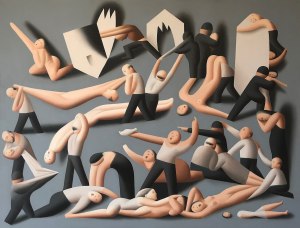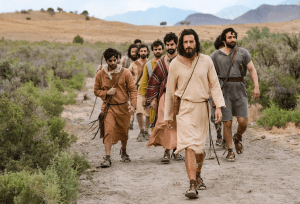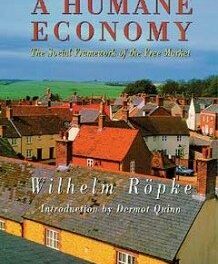We support our Publishers and Content Creators. You can view this story on their website by CLICKING HERE.
A proponent of African slavery before denouncing it and repenting, a prophet who predicted the fall of the Spanish empire owing to its sinfulness, a priest, bishop, reformer, and scholar, Father Batolomé de las Casas fought the good fight, ran the race, and kept the faith—and that until his very end.
“People need to be reminded more often than they need to be instructed.”
– Samuel Johnson
Some features of the news seem too much with us: the colonial suppression of peoples and their cultures, racial subjugation and abuse (systemic or otherwise), the direst physical exploitation of those oppressed, even the denial of their very humanity. In fact, this mix could be the prominent feature of our Weltanschauung.
And yet, notwithstanding its ubiquity, the mix is not news. In our hemisphere it is five hundred years old. Moreover, it was named, opposed, debated, and addressed in a lesson for the ages. What should astonish us is that this lesson was taught, its lineaments prodigiously described and implacably attacked, largely (by no means solely) by one man, Father Bartolomé de las Casas.
The scaffolding of his life is well-established.[1] He was born in Seville in 1484, a year after his father and three uncles had sailed with Columbus on his second voyage. They had brought back with them an Indian for Bartolomé, who soon assured the man’s repatriation to the Indies. Bartolomé arrived there himself in 1502, five years later traveling to Rome for his deaconate; soon he would become the first priest ordained in the New World. In 1511 he hears, in the company of several invited dignitaries of Hispañola, Friar Antón Montesinos, a Dominican monk, preach a sermon attacking the many abuses of the Indians. In 1522, he himself becomes a Dominican.
During these years there is much complaint, mostly from the clergy led by Bartolomé, about the encomienda system, royal grants allowing the grantee to demand tribute and labor from natives and to pass that grant on to his heirs. As its brutality became more known in Spain, the treatment of the Indians wrought by the system, though not the system itself, was mitigated by royal decree in the early sixteenth century, but encomiendas would continue until its abolition in the eighteenth century. (It had its defenders: planters, philosophers, and even clerics).
Eventually its brutality becomes known to the Emperor Charles V (Charles I, as king of Spain), and there follows the central, or at least the most famous, event of de las Casas’s life. Charles ordered a debate between Ginés de Sepulveda, a humanist scholar, and Bartolomé, to take place at the University of Valladolid. The book that followed would be the earthshaking The Devastation of the Indies (A Brief Account)[2], quickly translated into English, Dutch, French and other European languages.[3] It caused a scandal and inevitably was used as a weapon against Spain and its New World project. (Would that there had been a Puritan Bartolomé in North America a hundred years later.)
Prior to that, however, the ground had been prepared. In 1520 Charles had granted Bartolmé a hearing to explain his views before the supreme Council of the Indies (established by Charles in 1524, lasting until 1834). To a packed house he argued that the period of conquest was over and that the time for peaceful conversion was at hand. He was not alone, and the emperor came down on the side of Bartolomé: the Indians could be governed without the force of arms. Withal, the ruling had little effect in the distant Indies.
Later, Pope Paul III’s bull Sublimis Deus (1537), proclaimed that American Indians were rational beings, with souls, and that their lives and property should be protected. Then Bartolomé went further than he had before. All Spaniards seeking absolution, he claimed, must free their Indians and make restitution. “There is no Spaniard in the Indies,” he wrote, “who has shown good faith in connection with the war of Conquest,” the official designation of the Spanish project in he New World. Many, even among Bartolomé’s own clergy, resisted. He was recalled to Spain, where he died in Madrid on July 18th, 1566.
His three arguments became, in ascending order of importance: 1/ the various indigenous cultures are whole and legitimate; 2/ their peoples have been savagely treated by the Spaniards in the New World; 3/ they are human beings with souls. About the first he wrote in his Apologia:
I have… demonstrated openly… from chapter 22 to the end of this whole book [the Historia, of which the Apologia was earlier excerpted, it not being ‘history’], that all people of these our Indies are human, so far as is possible by the natural and human way and without the light of faith – [they] had their republics, places, towns, and cities most abundant and well provided for, and did not lack anything to live politically and socially, and attain and enjoy civil happiness…. And they equaled many nations of this world that are… considered civilized, and they surpassed many others…. Among those they equaled were the Greeks and the Romans, and they surpassed them by many good and better customs. They surpassed also the English and the French and some of the people of our own Spain… in having good customs and lacking many evil ones.
The claim may be a stretch, but it is not farfetched. Even Cortes allowed that Europe had no city to equal Tenochtitlan, the Aztec capital. Furthermore, Bartolomé knew the various tribes: Taino, Carib (or Kalina), Guanahatabey, Inca, Aztec. (But there is a weakness in his argument, i.e. the homogenization of the tribes. The Aztec, for example, were far more brutal than the Spaniards.)
The second pillar of Bartolomé’s argument, Spanish brutality, seems to have known no bounds. In fact, his Devastation makes for difficult reading, not least because much is an eye witness accounting. After describing the humility of the Indian as “the most guileless, the most devoid of wickedness,” he tells us that “into this sheepfold, into this land of meek outcasts there came some Spaniards who immediately behaved like ravening wild beasts” and have behaved in no other way during the past forty years.” He recalls the many small islands, “the least felicitous of them more fertile and beautiful than the gardens of the King of Seville.” There had been five hundred thousand among those, but no longer. “All the people were slain or died after being taken into captivity and brought to the island of Hispañola to be sold as slaves.” Those who escaped were pursued for three years and were eventually slaughtered.
Bartolomé sometimes compared the suffering of the Indians to the Passion of Christ, and he is unrelenting; in paragraph after paragraph horror after horror comes forth. When the Indians resisted, “the Spaniards killed all the chieftains, and all the Indians capable of making war . . . [and] cast all the others into servitude. One captain-general, when waging war on a town, took with him “ten or twenty thousand already subjected Indians and set them to fight the Indians in the town or province.” Then, to provide food for his Indians “he gave them permission to eat the enemy.” The incidents, the number of slaughtered Indians, the enormities (including children fed to dogs) mount up. The Spaniards broke up marriages, separating husbands and wives, robbed couples of their children, took for themselves the wives and daughters of the people, or gave them to sailor and soldiers as consolation…. And truth to say, if one wanted to tell about this in detail or to describe all the cruelties perpetrated, it would make a big book that would horrify the world – and so it did, as Bartolomé’s multi-volume History of the Indies, written over succeeding decades, and with the effect he predicted.
The most important question, though, was the humanity of the Indians, addressed in the Valladolid debate between Bartolomé and Sepulveda. In 1992 a superb French film, La Controverse de Valladolid, gave us Jean-Luis Trintignant as the Aristotelian humanist Sepulveda, strong casting for a very strong advocate. Alas, the event of the debate is fictionalized. The two men never faced each other but presented their arguments in writing to the judges, who ruled in Bartolomé’s favor. The arguments, however, are the real thing. The Indians have no Reason, are of a grotesque physical form and manner, speak a primitive language, and have no sense of humor. Just look for yourself, says Sepulveda, but Bartolomé has brought along a whole Indian family, their children especially treasured.
The climax is wonderfully satisfying. A pompous functionary of the court, when rushing from behind a bench to a more prominent place, falls flat on his face, and the Indians – laugh, and they keep laughing, as they point at the foolish figure. The spectators laugh with them, are just like them, and so we see their full humanity, in fact, we see that they have souls. That the episode never happened does not matter; it could have.
Bartolomé argued that the Indian mind is “quick, alive, capable, clear. This mind comes to them primarily from the will of God.” He points to their artisan ability, their logic, and even to their handwriting. “They thus can be taught a complete and sound morality,” and that even those tribes that have “certain corrupt customs” are “curable finally with human effort, and more so, better so, with the preaching of the gospel,” which must never be done by coercion, let alone by violence. “The practice of subjecting pagan peoples by war,” he argues, “so to make them hear the gospel preached, then accept the faith, is totally unlike the true way, a contradiction of it.”
All of the “horrible cruelties” perpetrated by the Spanish upon the Indian, he says, “[were] in violation of the holy and spotless law of Jesus Christ… and a terrible blot on the name of Christ and the Christian faith.” He goes on to predict that God will “pour out his fury and anger on Spain…. For the whole of Spain has shared in the blood-soaked riches . . . unless Spain does a mighty penance.” In short, he argues from Scripture, Natural Law, Aristotelian logic, and empirical evidence – what he and others have have witnessed – that these people are human, and, therefore, possessed of souls, and, therefore, must not be abused, and that to do so is profoundly sinful. “Christ,” he said, “did not die for gold.”
The godfather (so to speak) of Lascasian studies is Lewis Hanke. In his The Spanish Struggle for Justice in the Conquest of America (1949), he argues that the Spanish conquest of America was one of the greatest attempts the world has seen to make Christian precepts prevail in the relations between peoples. His view contradicts Bartolomé’s prevailing narrative of the Spanish as uniformly exploitative regarding the Indian. He has also shown that Bartolomé was not alone but rather the leader among many who constituted a reformist movement. Now, though, there are innumerable studies and academic and international institutes devoted to interpreting his work, and he is included in South American school curricula.
A friend of the Columbus family, a proponent of African slavery before denouncing it and repenting, a prophet who predicted the fall of the Spanish empire owing to its sinfulness, a priest, bishop, reformer and scholar, Father Batolomé de las Casas knew, if not all of the burgeoning empire, then surely most of it, from Mexico to Peru. As he lay dying, he sent a petition via messenger to the new Dominican Pope Pius V begging that he condemn conquest as a means of conversion. In short, and to paraphrase St. Timothy, Bartolomé fought the good fight, ran the race, and kept the faith – and that until his very end.
The Imaginative Conservative applies the principle of appreciation to the discussion of culture and politics—we approach dialogue with magnanimity rather than with mere civility. Will you help us remain a refreshing oasis in the increasingly contentious arena of modern discourse? Please consider donating now.
Notes:
[1] The definitive work on de las Casas is Gustavo Gutiérrez, Las Cases: In Search of the Poor of Jesus Christ, Orbis Books, Maryknoll, NY, English trans. 1993 (originally published in Spanish in Lima, Peru, Casa-Rimac, 1992: Father Gutiérrez, ninety-five years old as of this writing, is the founder of the controversial movement known as Liberation Theology). Lewis Hanke’s The Spanish Struggle for Justice in the Conquest of America (1949) was groundbreaking.
[2] It is the most famous of his works, begun 1542, pub. 1552, trans. Herma Briffault (1974), Johns Hopkins University Press, 1992. His second most influential book was his first (1537), The Only Way to Draw All People to a Living Faith, trans. Francis Patrick Sullivan, S.J., The Paulist Press, 1992.
[3] To this day there remains some dispute on the chronology and manuscript authority of some of Bartolomé’s works. Apparently, he did not himself see the Historia apologtica and the Historia de las Indias as two separate works. The former, part of the latter, was circulated widely, before both the conciliar hearing and the debate. The latter was published posthumously.
The featured image is an anonymous 16th-century portrait of Bartolomé de Las Casas, and is in the public domain, courtesy of Wikimedia Commons.

 Conservative
Conservative  Search
Search Trending
Trending Current News
Current News 






